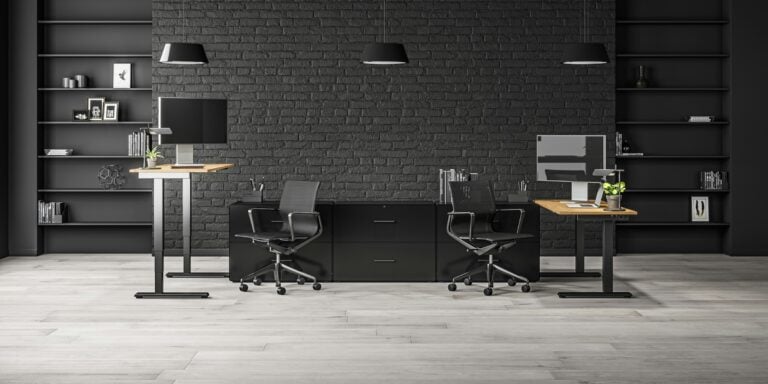What Is The 20-8-2 Rule?

Are you tired of feeling sluggish and achy after long hours at your desk? The 20-8-2 rule might be the solution you’ve been looking for. This simple rule, developed by ergonomics professor Dr. Alan Hedge at Cornell University, aims to balance sitting, standing, and moving throughout your workday.
The 20-8-2 rule suggests dividing each 30-minute period of your workday as follows:
- Sit for 20 minutes
- Stand for 8 minutes
- Move or stretch for 2 minutes
This cycle is designed to keep your body active and maintain good posture throughout the day.
Benefits of the 20-8-2 Rule
While there isn’t much research that studies the 20-8-2 rule directly, there is research that supports the key principles behind it—namely, that breaking up prolonged sitting with periods of standing and walking can reduce the health consequences of prolonged sitting.
Sharpened Focus
Short, frequent physical activity breaks have been shown to improve cognitive functioning. A study demonstrated that such breaks enhance working memory performance while preserving cerebral blood flow during prolonged sitting periods.
Increased Energy
Research suggests that taking intermittent breaks—such as following the 20-8-2 rule—can help combat fatigue throughout the workday.
Pain reduction
Research indicates that adding microbreaks to your daily routine can significantly reduce musculoskeletal pain, particularly for those in sedentary occupations.
Tips for implementing the rule
Not sure how to incorporate short breaks into your routine? Here are some practical ways to make them a natural part of your day.
Pair Breaks with an Existing Habit

One of the easiest ways to build a habit is to attach it to something you already do. Instead of trying to remember to take breaks, link them to daily activities.
Take a quick stretch while waiting for your coffee or tea to brew. After drinking a glass of water, do a deep-breathing exercise.
If you often take phone calls, try standing up or walking around while talking. By connecting breaks with things you naturally do, you make them effortless to incorporate.
Hydrate and Move
Drinking enough water is important, and it can also serve as a natural cue to take a break. Instead of keeping a large water bottle at your desk, get up to refill your glass every so often.
Rearrange Your Workspace to Encourage Movement
If everything is within arm’s reach, you may not move as much as you should. A simple way to add more movement to your day is to place frequently used items farther away.
Move your printer, trash bin, or office supplies across the room so you have to stand up to use them. Store your phone or notebook in another part of your office so you walk to get them.
These small adjustments naturally force you to get up and move more often.
Engage in Mindfulness or Daydreaming
Not all breaks need to involve movement—mental breaks are just as valuable! Taking a moment to pause and breathe can help reduce stress. Try closing your eyes and focusing on your breathing for a minute.
Letting your mind wander or daydreaming can also boost creativity and problem-solving. A short mental reset can make a big difference in your overall focus.
Change Your Environment
A change of scenery can refresh your mind and help prevent mental fatigue. Stepping outside, even for just a minute, can provide fresh air and a new perspective.
If going outside isn’t an option, try moving to a different part of your home or office.
Listen to Music or a Short Podcast Segment
Music can boost your mood and help re-energize you. Listening to a short podcast segment can provide a mental shift and spark new ideas.
Try playing an upbeat song, a motivational clip, or even a nature soundscape.
A few minutes of audio stimulation can help break up your routine and reset your focus.
Consider Using a Standing Desk

Incorporating standing into your workday can be an excellent way to complement the 20-8-2 rule. Standing desks allow you to alternate between sitting and standing with ease, promoting better posture and reducing the negative health effects of prolonged sitting.
Conclusion
Breaking up prolonged sitting with the 20-8-2 rule is a simple yet powerful way to boost productivity, energy, and overall health. By integrating movement into your work routine, you can create a healthier, more dynamic work environment. Start small by setting reminders, investing in the right ergonomic office furniture, and making movement a habit. Your body—and your productivity—will thank you!
Looking for a budget-friendly way to upgrade your workspace?
Explore top-rated standing desks under $200 (including options for short people and petite women) and discover affordable options to support your ergonomic and active work lifestyle.



